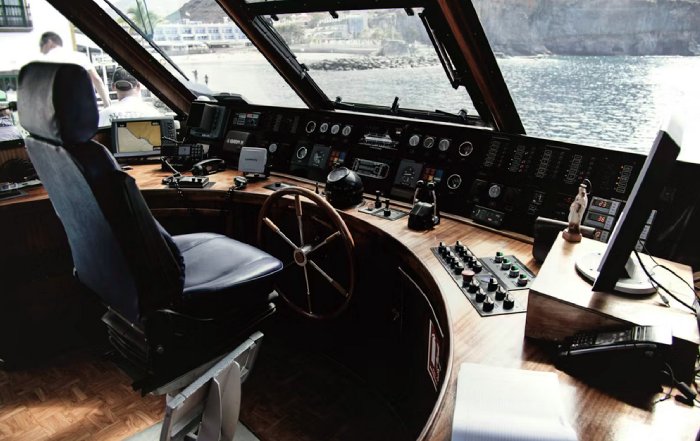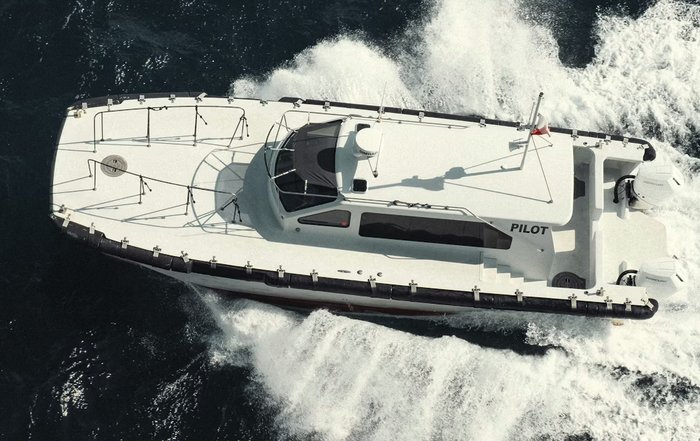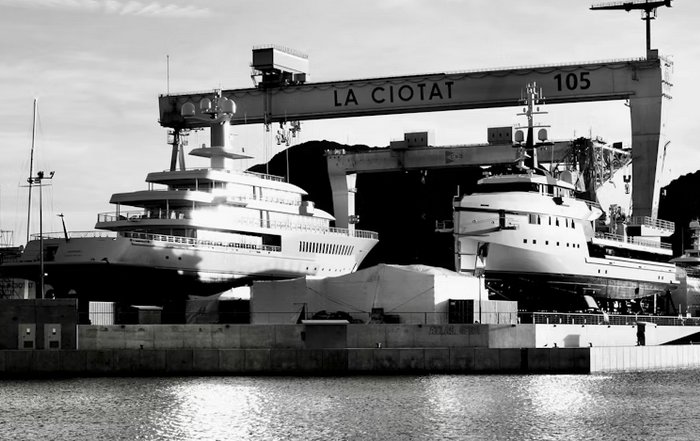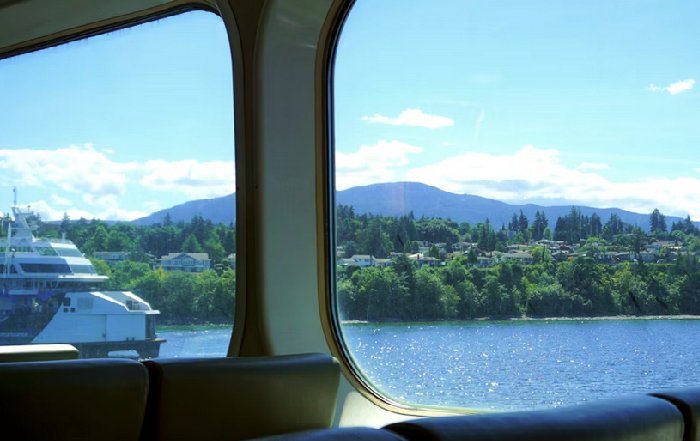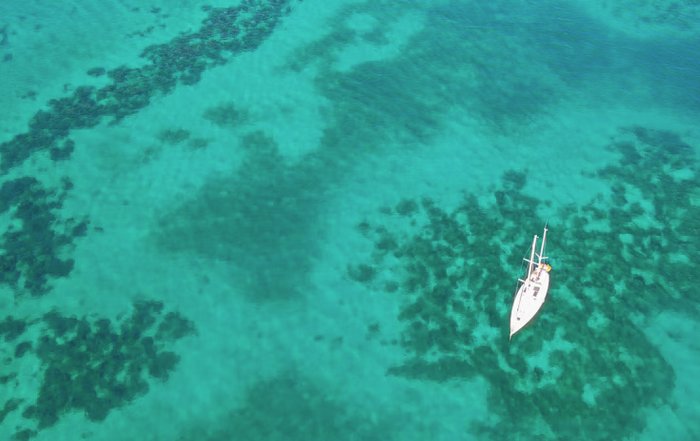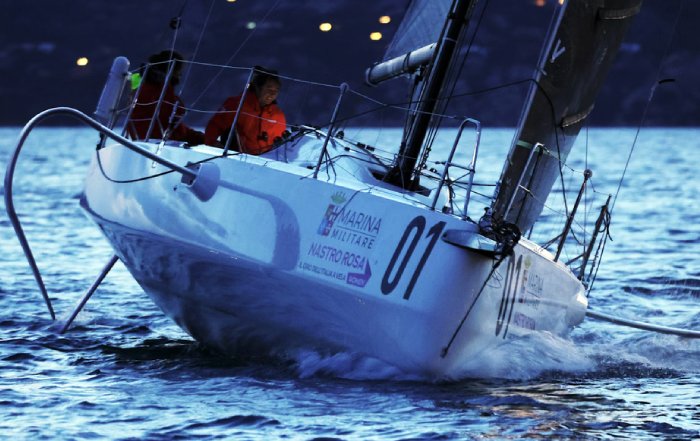Navigational Technology Every Skipper Should Know in 2025
The New Era of Seamanship
In 2025, modern seamanship is defined as much by digital competence as by traditional skills, and nowhere is this more evident than in the field of marine navigation, where every skipper, whether commanding a family cruiser in the Mediterranean, a performance yacht in the Caribbean, or a superyacht along the coasts of the United States, United Kingdom, or Australia, is expected to master a sophisticated suite of navigational technologies that would have been unimaginable only a generation ago. For the editorial team at yacht-review.com, which has spent years evaluating yachts, onboard systems, and real-world cruising experiences across Europe, Asia, North America, and beyond, it has become clear that the skippers who navigate most safely and confidently are those who understand not only which technologies to use, but also how these tools interact, where their limitations lie, and how they can be integrated into a coherent, resilient navigational strategy that respects both innovation and the timeless fundamentals of seamanship.
As digital systems have become more powerful and more connected, the distinction between "navigation equipment" and the rest of the yacht's onboard infrastructure has blurred, with navigation now deeply intertwined with communications, safety, propulsion management, and even onboard lifestyle systems, and for this reason, any skipper who wants to remain credible and trusted in 2025 must treat navigational technology as a core leadership responsibility rather than a technical afterthought. Readers who follow the technology coverage on yacht-review.com will already recognize that chartplotters, radar, AIS, satellite communications, and integrated bridge systems are no longer luxuries reserved for commercial ships or superyachts, but are increasingly standard even on mid-size cruising yachts and premium production boats, and this shift has profound implications for how skippers are trained, how voyages are planned, and how decisions are made when conditions deteriorate or systems fail unexpectedly.
From Paper to Pixels: The Evolution of Electronic Charting
The transition from paper charts to electronic navigation has been underway for decades, but by 2025, electronic chartplotters and digital navigation suites have become the primary reference for most skippers, with paper retained as a backup and a legal or procedural requirement rather than the primary working tool, particularly in regions such as Europe, North America, and advanced yachting markets like Singapore and Japan. Modern multifunction displays from leading manufacturers such as Garmin, Raymarine, Simrad, and Furuno now combine vector charts, radar overlays, AIS targets, depth sounder data, and even real-time weather information on a single screen, offering skippers a level of situational awareness that would have been the envy of commercial captains only a decade ago, and yet this sophistication also introduces risks of over-reliance, complacency, and misinterpretation when the underlying data or sensors are flawed.
The editorial team at yacht-review.com, through its extensive yacht reviews and sea trials, has consistently observed that the best-performing skippers are those who treat the chartplotter as a decision-support tool rather than an infallible authority, cross-checking charted depths with echo sounder readings, verifying GPS positions against visual bearings, and maintaining an active mental picture of the vessel's position relative to hazards, traffic lanes, and weather systems. The availability of high-quality electronic charts from providers such as Navionics and C-MAP has dramatically improved coverage and detail for popular cruising regions like the Mediterranean, the Caribbean, and the coasts of the United States, Canada, and Australia, and skippers can now access crowd-sourced data, user-generated updates, and satellite imagery layers that complement official hydrographic information, yet they must also be aware that not all data is equally reliable, that charted information may be out of date in rapidly changing environments like river deltas or shifting sandbanks, and that prudent navigation still demands critical thinking and redundancy.
For those seeking a deeper understanding of electronic navigational charts and official standards, resources such as the International Hydrographic Organization provide valuable background on chart production and data quality, and skippers who integrate this knowledge into their practice are better equipped to interpret what they see on screen and to recognize when something does not look right. As yacht-review.com has emphasized in its design and technology coverage, the most advanced navigation stations are those that combine ergonomic layout, intuitive interfaces, and redundant displays, enabling the skipper to maintain situational awareness from both the interior helm and exterior cockpit or flybridge, even in challenging visibility or sea conditions.
GPS, GNSS, and the Need for Redundancy
Global Positioning System (GPS) technology, now part of a broader constellation of Global Navigation Satellite Systems (GNSS) including GLONASS, Galileo, and BeiDou, has become so ubiquitous that many skippers in Europe, Asia, and the Americas rarely stop to consider how dependent their navigation has become on satellite signals, yet in 2025, the professional consensus among safety agencies, insurers, and training organizations is clear: every responsible skipper must understand both the strengths and vulnerabilities of GNSS and must plan accordingly. High-precision receivers, differential corrections, and multi-constellation support have dramatically improved accuracy, especially near coasts and in harbors, and integration with autopilots and electronic charts allows for highly precise track-keeping, which is particularly valued by long-distance cruisers and performance-oriented skippers.
However, as documented by organizations such as the U.S. Coast Guard Navigation Center, GNSS signals remain susceptible to interference, jamming, and spoofing, and there have been documented incidents in regions such as the Eastern Mediterranean and parts of Asia where vessels reported sudden, unexplained position shifts or loss of signal. Experienced skippers, including many interviewed by yacht-review.com in its global cruising features, now routinely adopt a layered approach, combining primary GNSS with secondary receivers, inertial navigation aids, and traditional methods such as dead reckoning and visual pilotage, and maintaining at least one independent position reference, such as a handheld GPS unit or a tablet-based navigation app, that is powered separately from the yacht's main electrical system.
In this environment, training and ongoing education become critical, and skippers who invest time in advanced navigation courses, simulator training, and practical exercises are better prepared to handle GNSS anomalies or failures. International bodies such as the International Maritime Organization and national hydrographic offices continue to publish guidance on best practices for electronic navigation, and skippers who follow these developments and who integrate them into their standard operating procedures demonstrate a level of professionalism and trustworthiness that is increasingly expected by owners, charter clients, and insurers across markets from Germany and France to South Africa and New Zealand.
Radar and ARPA: Seeing Beyond the Horizon
Marine radar remains one of the most powerful tools for collision avoidance and navigation in restricted visibility, and in 2025, technological advances such as solid-state radar, Doppler processing, and advanced target tracking have made radar systems more capable, energy-efficient, and user-friendly than ever before, allowing even smaller yachts to benefit from features that were once reserved for large commercial vessels. Skippers who operate in fog-prone regions like the North Atlantic, the English Channel, or the coasts of Scandinavia, as well as those navigating busy approaches to ports in Asia or North America, increasingly view radar as an indispensable complement to AIS and visual watchkeeping, particularly at night or in heavy rain, when reliance on eyesight alone is insufficient.
Modern radar systems with Automatic Radar Plotting Aid (ARPA) capabilities can automatically track multiple targets, calculate their closest point of approach (CPA) and time to closest point of approach (TCPA), and present the skipper with clear indications of which vessels pose a risk of collision, and when integrated with chartplotters and AIS, these systems can provide a remarkably detailed real-time picture of the surrounding traffic and coastline. However, as testing and sea trials conducted for yacht-review.com have repeatedly shown, the effectiveness of radar depends heavily on correct setup, interpretation, and maintenance, and skippers must be comfortable adjusting gain, sea clutter, rain clutter, and range settings, as well as understanding the limitations of radar in detecting small craft, buoys, or vessels partially obscured by waves.
Organizations such as the Royal Yachting Association and similar training bodies in the United States, Canada, and Europe continue to emphasize radar training as part of advanced skipper qualifications, and many of the most safety-conscious yacht owners now expect their captains to demonstrate not only basic radar competence but also advanced skills in using radar for coastal navigation, pilotage, and anchorage selection. For readers of yacht-review.com who are considering upgrades to their onboard systems, the site's technology section offers ongoing analysis of radar developments, integration options, and real-world performance in conditions ranging from the Baltic to the South Pacific.
AIS and the Connected Maritime Environment
Automatic Identification System (AIS) technology has transformed maritime situational awareness by enabling vessels to broadcast and receive information about their identity, position, course, and speed, and by 2025, AIS has become a standard feature on most professionally operated yachts and is increasingly common on privately owned vessels in regions such as the United States, United Kingdom, Germany, and the Netherlands. Skippers who use AIS effectively gain a significant safety advantage, particularly in congested shipping lanes, narrow channels, and areas with heavy commercial traffic, as they can identify vessels at long range, assess collision risks, and often contact other ships directly by name and call sign, reducing ambiguity and improving communication.
The integration of AIS with electronic charts and radar allows skippers to distinguish between targets that are broadcasting AIS and those that are not, such as some fishing boats, small recreational craft, or unlit buoys, and this distinction is critical in forming a complete picture of the navigational environment. Moreover, shore-based AIS networks and satellite AIS services, as discussed by organizations such as MarineTraffic and other maritime data providers, now enable long-range tracking and fleet monitoring, which is of particular interest to yacht management companies, charter operators, and family members who wish to follow a yacht's progress during extended passages. The editorial coverage on yacht-review.com has highlighted how many professional skippers now integrate AIS data into their voyage planning, using it not only for collision avoidance but also for analyzing traffic patterns, identifying preferred anchorages, and understanding how commercial traffic interacts with recreational routes in regions from the Mediterranean to Southeast Asia.
Nonetheless, AIS is not a substitute for radar or visual watchkeeping, and responsible skippers remain aware that AIS participation is not universal, that equipment can fail, and that over-reliance on AIS for collision avoidance can lead to dangerous assumptions, especially in poor visibility or when dealing with non-compliant vessels. The most trusted skippers are those who use AIS as one layer in a comprehensive safety strategy, combining it with radar, lookout, and sound signals, and who maintain disciplined bridge procedures that prioritize human judgment over automation.
Integrated Bridges and the Digital Helm
On many of the yachts reviewed and profiled by yacht-review.com, particularly in the 50-foot-plus segment and among superyachts, integrated bridge systems have become the norm, unifying navigation, propulsion control, alarms, communications, and monitoring into a cohesive digital helm environment that can be customized to the skipper's preferences and the yacht's operational profile. These systems, often developed by companies such as Nobeltec, Transas, and major electronics manufacturers, aim to reduce clutter, streamline workflows, and present only the most relevant information at each phase of navigation, whether departing a marina, crossing an ocean, or maneuvering in a crowded harbor.
The benefits of integration are clear: fewer standalone displays, more consistent interfaces, and the ability to share data across systems, such as using engine and fuel data to refine passage planning or integrating weather routing with autopilot control. However, integration also introduces complexity and the potential for cascading failures if critical components or networks are compromised, and experienced skippers in regions as diverse as the Mediterranean, the Caribbean, and the Asia-Pacific have learned to insist on robust redundancy, clear fallback modes, and manual overrides that allow them to retain control even if the primary digital systems fail. The business and technology analysis on yacht-review.com has repeatedly emphasized that owners and operators should view integrated bridge systems not merely as aesthetic upgrades, but as strategic investments that require careful specification, professional installation, and ongoing maintenance.
For skippers, mastering an integrated bridge means more than learning which buttons to press; it requires an understanding of how data flows through the system, which sensors feed which displays, how alarms are prioritized, and how to diagnose and isolate faults under pressure. Training programs offered by manufacturers, maritime academies, and specialized training centers increasingly focus on integrated bridge operations, and in 2025, many professional certifications and insurance policies reflect the expectation that skippers of larger yachts will be demonstrably competent in managing these complex environments, particularly when operating in high-traffic or high-regulation areas such as Northern Europe, the United States, or parts of Asia.
Digital Passage Planning and Weather Routing
Advances in digital passage planning and weather routing have transformed how skippers plan and execute voyages, enabling them to make more informed decisions about routes, departure windows, and fuel consumption, and these tools have become particularly valuable for long-distance cruisers, transoceanic passages, and high-latitude expeditions. Software and services now provide high-resolution weather models, ocean current data, wave forecasts, and even ensemble predictions that allow skippers to assess uncertainty and risk, and when integrated with the yacht's navigation systems, these tools can propose optimized routes that balance safety, comfort, and efficiency.
Leading meteorological organizations such as the National Oceanic and Atmospheric Administration and the UK Met Office offer extensive marine forecasts, climatological data, and educational resources that skippers can incorporate into their planning, and many of the most experienced captains interviewed by yacht-review.com describe a planning process that combines professional weather routing services, onboard software, and their own judgment, particularly when navigating complex regions like the North Atlantic, the Southern Ocean, or monsoon-influenced areas in Asia. For readers interested in the lifestyle and practical realities of extended cruising, the cruising section of yacht-review.com frequently showcases real-world examples of how skippers use these tools to choose safe weather windows, avoid dangerous sea states, and improve comfort for guests and crew.
However, as with all technology, skippers must remain aware of the limitations of weather models, the potential for forecast errors, and the need to maintain flexibility and contingency plans. Experienced navigators emphasize that a well-prepared skipper should always have a secondary route, alternative ports of refuge, and clear criteria for delaying departure or altering course, and that these decisions should be documented and communicated to the owner, crew, and, where appropriate, shore-based management. In this context, digital tools are best seen as enablers of informed decision-making rather than as automatic route generators, and skippers who adopt this mindset tend to earn higher levels of trust from owners, charter clients, and insurers across global yachting markets.
Safety, Compliance, and Regulatory Expectations
By 2025, regulatory expectations around navigational technology have become more stringent in many jurisdictions, and skippers operating in or between regions such as the European Union, the United States, and Asia must be aware of varying requirements for equipment, training, and record-keeping, especially when carrying paying passengers or operating larger yachts that fall under commercial codes. Authorities and classification societies increasingly expect vessels to maintain up-to-date electronic charts, functional AIS and radar systems, and reliable communication links, and they may require documented evidence of equipment maintenance, software updates, and crew training, particularly in the aftermath of incidents or near misses.
Organizations such as the International Maritime Organization and regional regulatory bodies continue to refine standards for electronic navigation, ECDIS usage, and bridge procedures, and while many of these regulations are targeted at commercial shipping, they influence best practices in the yachting sector as well. The news and regulatory coverage on yacht-review.com frequently highlights changes in international and national rules that affect yacht skippers, including developments in electronic logbooks, digital reporting, and mandatory safety equipment, and skippers who stay informed through such channels demonstrate a proactive approach to compliance that is increasingly valued by owners and management companies in markets from Italy and Spain to Singapore and South Africa.
From a safety perspective, navigational technology also plays a central role in emergency response, search and rescue coordination, and incident documentation, and skippers must be proficient in using their equipment to generate accurate position reports, distress alerts, and incident logs. Integration with systems such as Global Maritime Distress and Safety System (GMDSS), EPIRBs, and satellite communications platforms means that navigation data can be rapidly shared with rescue authorities and support teams, improving the chances of successful outcomes in emergencies and contributing to post-incident analysis and learning.
Sustainability, Efficiency, and Responsible Navigation
Sustainability has become a defining theme across the yachting industry, and navigational technology plays a significant role in enabling more efficient, environmentally responsible operations, particularly in sensitive regions such as marine protected areas, coral reefs, and high-latitude ecosystems. Skippers who leverage advanced route optimization, real-time current data, and precise engine and fuel monitoring can significantly reduce fuel consumption, emissions, and underwater noise, aligning their practices with evolving expectations from regulators, owners, and the broader public in markets such as Germany, the Netherlands, Scandinavia, and New Zealand, where environmental awareness is particularly strong.
For the editorial team at yacht-review.com, which maintains a dedicated sustainability section, it has become evident that responsible navigation is no longer limited to avoiding physical hazards, but extends to minimizing ecological impact, respecting restricted zones, and supporting broader efforts to protect marine biodiversity. Technologies such as electronic charts with environmental overlays, automatic alerts for no-anchor zones, and integration with databases of marine protected areas, as promoted by organizations like the International Union for Conservation of Nature, allow skippers to make informed decisions that balance operational needs with environmental stewardship.
Moreover, accurate navigation and anchoring supported by high-resolution charts and positioning systems can reduce physical damage to seabeds, reefs, and seagrass meadows, and in many popular cruising destinations from the Mediterranean to Southeast Asia and the South Pacific, local authorities are increasingly monitoring vessel behavior and enforcing regulations aimed at protecting sensitive habitats. Skippers who embrace these tools and practices, and who communicate their commitment to sustainability to owners, guests, and crew, enhance their professional reputation and contribute to the long-term viability of the cruising grounds that underpin the global yachting lifestyle.
The Human Element: Training, Culture, and Continuous Learning
Despite the remarkable capabilities of modern navigational technology, the most consistent message emerging from the experiences shared on yacht-review.com and from professional training organizations worldwide is that technology cannot replace the human element, and that the competence, judgment, and mindset of the skipper remain the decisive factors in safe and successful navigation. In 2025, the most trusted skippers are those who combine technical proficiency with strong leadership, clear communication, and a culture of continuous learning, recognizing that systems evolve, software updates change interfaces and features, and new threats and vulnerabilities emerge over time.
Investment in formal training, simulator-based exercises, and recurring assessments is increasingly viewed as a hallmark of professionalism, particularly in markets such as the United States, United Kingdom, Germany, and Singapore, where owners and management companies expect skippers to maintain current certifications and to demonstrate familiarity with the latest navigational tools and best practices. At the same time, informal learning through peer networks, professional forums, and trusted media sources plays a vital role, and yacht-review.com, through its community and lifestyle coverage, provides a platform where skippers, owners, and industry experts can share experiences, lessons learned, and practical insights that complement formal training.
Ultimately, the navigational technology every skipper should know in 2025 is not defined solely by a list of devices or software packages, but by an integrated approach that combines robust hardware, high-quality data, disciplined procedures, and a commitment to ongoing education and improvement. Whether operating a family cruiser along the coasts of Canada or Australia, a performance yacht in the Mediterranean, or a superyacht on a global itinerary spanning Europe, Asia, Africa, and the Americas, skippers who embrace this holistic view of navigation are best positioned to deliver the safety, reliability, and confidence that owners, guests, and crews expect, and to uphold the standards of experience, expertise, authoritativeness, and trustworthiness that define the editorial mission of yacht-review.com.
For readers seeking to deepen their understanding of specific technologies, explore real-world yacht evaluations, or follow industry developments, the main portal at yacht-review.com and its dedicated sections on boats, travel, and events provide an evolving, globally informed resource that reflects the diverse interests and regions of the modern yachting community.

